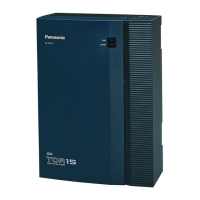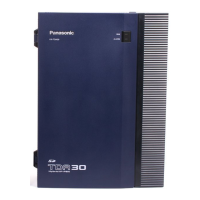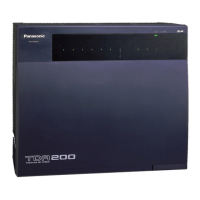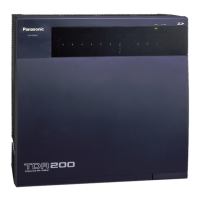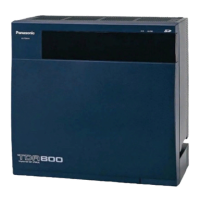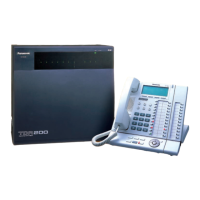Transmit Extension Status Information Functions
Enabled
• Transmit information on own PBX extensions
• Receive
information from other PBXs; forward it to other QSIG ports of
the PBX
• Re-transmit information received by other QSIG ports of the PBX
Disabled
• Receive
information from other PBXs; forward it to other QSIG ports of
the PBX
Set the transmission setting for each port according to the layout of your network, so that extension status
information can travel between NDSS monitor PBXs.
[Example ISDN Network Port Setting]
PBX-1
Network ID 1
PBX-2
Network ID 0
4001
Idle Busy
OFF
OFF
ON
ON
ONOFF
OFFOFF
ON
4001
Busy
4001
Busy
4001
Busy
PBX-3
PBX-5
PBX-4
Network ID 3
Idle
4001 NDSS
Busy
IP-GW-QSIG
IP
data is routed through the network according to the routing tables of the IP-GW cards. When using VoIP,
it is necessary to identify the monitor PBXs, to which to transmit extension status information, for each card
that will be used. This is done by specifying the extension number of any extension (for example, the PBX
operator) at the monitor PBX as a Network Operator extension for that IP-GW card.
[Example VoIP Network]
PBX-1
Network
ID 1
PBX-3
PBX-2
PBX-4
IP-GW
IP Network
Idle
4001 NDSS
Busy
4001
Idle Busy
Network
ID 2
Idle
4001 NDSS
Busy
250 Feature Manual Document Version 2010-11
13.1.15 Private Network Features—NDSS (Network Direct Station Selection)

